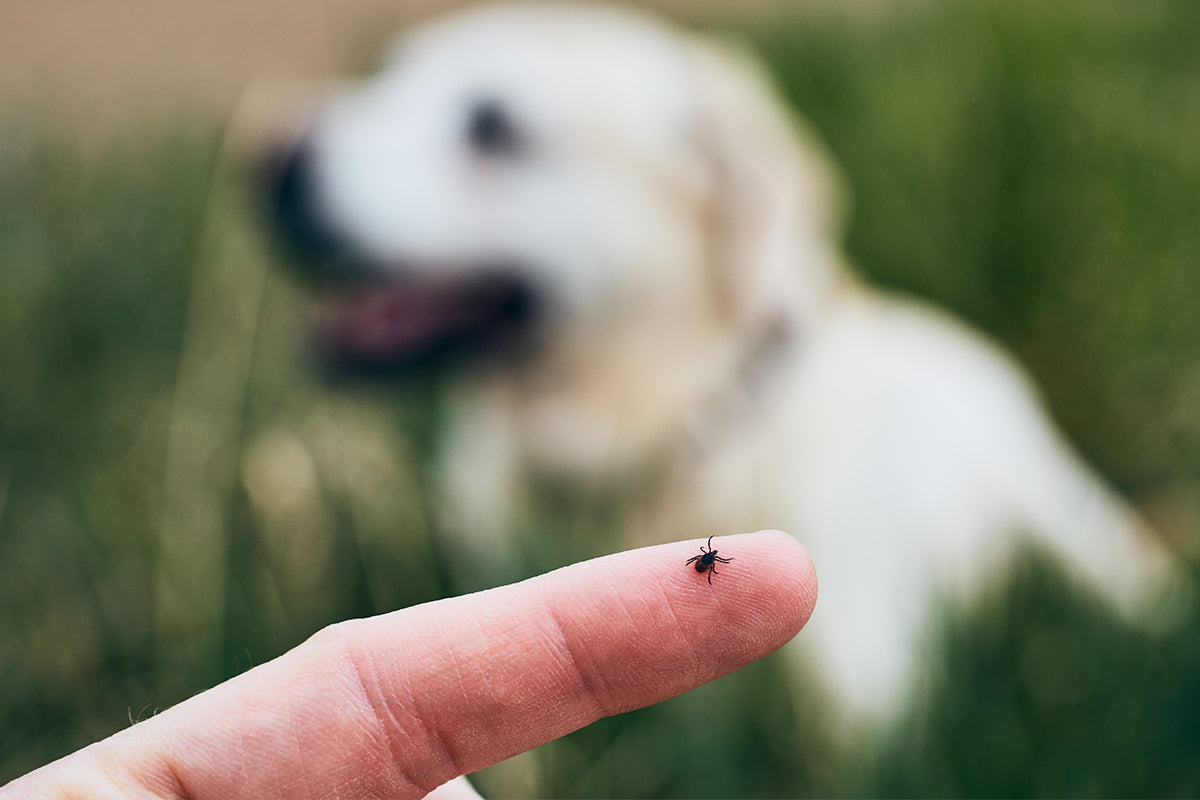Myth #1: Applying petroleum jelly, dish soap or a lit match will make ticks fall off, die or crawl away.
Fact: Your dog isn't ready for this jelly – or this dish soap, alcohol or lit match.
Once the tick is attached, the key is to remove it promptly. This can be achieved with a tick removal device, tweezers or if you are brave enough, twisting it with your fingers and plucking it out. Applying home-made potions and lotions are likely to have no effect and may irritate and harm your dog's precious fur and skin. But perhaps the most alarming is the lit match idea. Burning can be incredibly dangerous and painful for your pet, so don't even think about it.
Myth #2: Only dogs and cats that spend time in the bush will get ticks.
Fact: Ticks aren't dummies. Like other creatures, they'll naturally move to where animals (their hosts) live. That means urban, suburban and rural properties – and everything in between – could be crawling with ticks.
Now, just a fair warning, things are about to get a bit icky.
Ticks are generally found in any area with tall grass, brush and other shrubberies. Adult ticks crawl up blades of grass or bush branches and leaves to wait for an animal or person to walk by. This process is known as questing. When your dog brushes against this plant life, the tick will climb onto the dog and attach to the skin to feed on their blood. While on your pet, the Paralysis Tick injects a toxin that causes your pet to become paralysed. Feeding can take anywhere from a few hours to a few days. Once complete, the tick drops off and back into the environment.
Myth #3: Ticks communicate via a secret series of Bluetooth messages to alert each other of particularly dog-heavy areas.
Fact: We just wanted to make sure you were still with us.
Myth #4: Cold weather kills ticks, so I don't need to worry about them in winter.
Fact: As much as we'd like them to, ticks don't take the winters off. Ticks are definitely more prevalent in the warmer months, but cold weather doesn’t get rid of them completely. In some areas, ticks are present all year round, so it’s important to thoroughly check your dogs and cats consistently, and make sure there's no gaps in your prevention routine.
Myth #5: All ticks are the same.
Fact: Not true! There are 70 species of ticks in Australia. We mainly need to be concerned about the 16 of those species that feed on humans and domestic animals. The others prefer wild mammals, reptiles and birds.
There are two main types of ticks. Hard-bodied ticks have a hard shield behind their mouth parts and are shaped like flat seeds. Soft ticks don't have that hard shell and are shaped like a raisin.
Hard ticks are generally the types that you, your pets and your family are likely to encounter. The Paralysis Tick, Brown Dog Tick and Bush Tick are considered most likely to transmit disease, while the Paralysis Tick is the only one that can directly cause, as its name says, paralysis. They pose a severe threat once they latch on and start feeding.
Myth #6: Ticks only live outside.
Fact: Ticks can be brought inside on your pet, on your laundry or clothes, which is why we should never let our guard down. If you live in a tick area or have travelled to a tick area even if your pet hasn’t left the house, they are still at risk. So please be diligent and check your pet daily.
Ticks suck, in all manners of the word. A strong prevention routine is the best method for avoiding pain and discomfort. If you are worried your pet has been exposed to a Paralyis Tick, please call your vet or emergency hospital immediately for advice.
How often do you check your pet for ticks?







